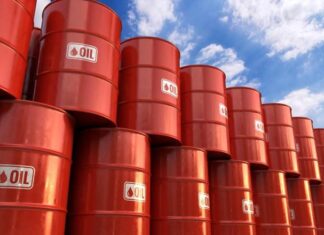The government’s proposed inverse gas tariff plan seeks to massively increase prices for 43pc of sale volumes to partially finance the cost of gas supplies to “protected” lower-end consumers, according to a report by Dawn.
The petroleum division has reported that that 57pc gas is consumed by 77pc consumers in the first and second slabs that the petroleum ministry seeks to protect with no price change.
The third slab pertains to almost two million consumers with 18pc of gas consumption whose monthly bill works out at Rs3,733. The petroleum division has sought their rate to go up by about 24pc to Rs683 per unit, showing an increase in monthly bill to Rs4,300, while 3.3pc consumers fall in the fourth slab with monthly consumption of 300 cubic metres for whom the division has suggested the price to increase by 35pc to Rs1,000 per unit that would increase its monthly bill by Rs2,260 to Rs10,272.
For the fifth slab of about 93,000 consumers are currently charged at Rs1,107 per unit, taking their bill to Rs14,400 per month. The petroleum division has proposed 36pc higher rate of Rs1,500 per unit for consumers in this category, increasing their monthly gas bill by Rs5,100 to Rs19,500.
Similarly, there are about 0.4pc consumers in the sixth and last slab of over 400-cubic-metre monthly consumption who utilise about 3pc gas sales and the division has suggested to go up by 37pc to Rs2,000 per unit. The monthly bill in this category at Rs25,500 would jump by Rs9,130 a month to reach Rs34,625.
The petroleum division has reported that two public sector gas utility companies – Sui Northern Gas Pipelines Limited (SNGPL) and Sui Southern Gas Company Limited (SSGCL) – were facing challenges as their indigenous gas supply sources have depleted and no net increase or addition has been witnessed. The import of RLNG to make up for the supply gap had substantial impact on their full cost recoveries due to drastic differences in the tariff for indigenous gas and imported RLNG.
This structure of lower tariff for residential consumers has resulted into accumulation of tariff differential on the balance sheets of SSGCL and SNGPL who are unable to pay the cost of gas purchases from public sector gas producers.
The petroleum division has argued that natural gas was scarce resource and its efficient utilisation for growth of the economy was unavoidable. Therefore, residential consumers using gas for the purpose of space and water heating should switch to electricity to reduce capacity payments against installed power generation capacity as well as minimising burden on gas supply chain.
It is yet to be seen, however, if enough electricity efficient space and water heating appliances are available in the market to facilitate this transition at a cost affordable and acceptable to consumers.























